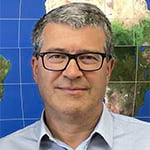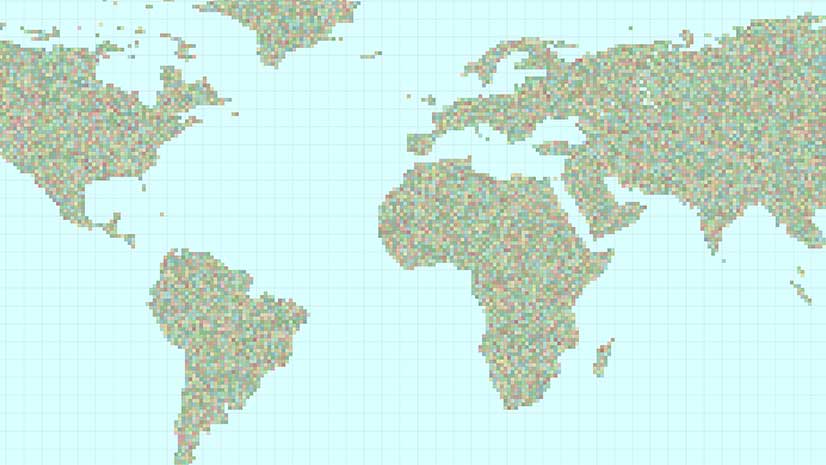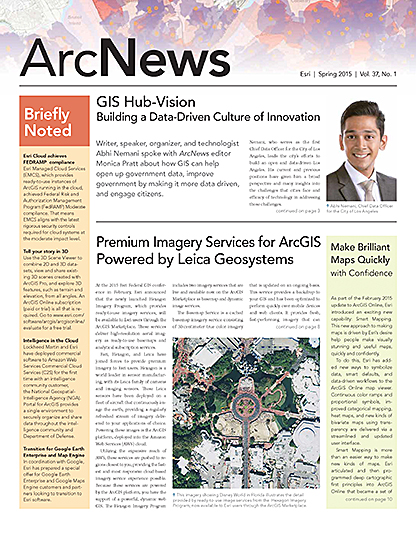As I understand it, geoinformation disciplines—geodata, geoinformation, spatial analysis, geodata infrastructures, cartography, and maps—don’t receive the acceptance, understanding, and acknowledgment by experts of other domains as well as decision makers and the public. Sometimes it is not immediately clear to someone outside our field why what we are doing is relevant and important and that it underpins so many processes of our lives, our society, our economy.
I argue that this situation can be improved. By being outspoken and proactive, we may be able to increase understanding of the relevance and importance of our work, our projects, our products, and more generally the power of geodata, geoinformation, and maps.
How can this best be done? By synchronizing our efforts at the highest level possible. This is exactly what is happening. At the fourth session of the United Nations Committee of Experts on Global Geospatial Information Management held in August 2014 at the UN Headquarters in New York, the International Cartographic Association (ICA) Initiative on an International Map Year 2015/16 was positively discussed. The resolution that resulted reads as follows:
“The committee endorses the International Map Year 2015–2016 as proposed by the International Cartographic Association as a valuable means to promote the importance of maps and Geoinformation.”
Why is the United Nations interested in promoting maps and geoinformation? Efficient handling of geographic information is of vital importance in dealing with climate change, natural disasters, environmental quality, pandemics, wars, famines, population displacement, migration and economic crises, and the many other problems currently facing the world. These problems are cross-border challenges that require global, regional, and national policy responses and the efficient handling of cartography and geographic information.
The main purpose of the International Map Year (IMY) is to highlight the importance of maps and geographic information in society. Our ever more complex society would be lost without maps and the proper use of geographic information. Topographic and geological maps as well as aerial photo products are used by the public for information and orientation but also by many professional organizations in fields such as planning and defense. Socioeconomic maps provide better insight into themes that range from sustainability to the spread of diseases. These maps help us to mitigate the global differences in the population’s access to resources. It is, therefore, most important that everyone can easily access and retrieve maps and geographic information.
The concept of IMY is therefore to demonstrate to the general public, as well as decision makers, the importance of using and making maps in a global context. This is in line with the Rio+20 Agenda signed by the UN Secretary General.
The International Map Year will be formally launched at the International Cartographic Association’s conference in Rio de Janeiro August 23, 2015, and will continue until the end of 2016. Planning for national events associated with the International Map Year started at the beginning of 2015.
IMY has four target groups: the general public, schoolchildren, professionals, and governments. Activities can include anything related to using and making maps. The objective of the United Nations resolution is to
- Provide recognition by the United Nations and its member states of the importance of maps and geospatial information for society.
- Encourage member states to further support making maps and geospatial information more accessible.
- Motivate member states to improve the general public’s awareness of the availability of maps in their nation as well as improve understanding of how to use maps and geospatial information.
- Recognize the importance of the work of cartographic professionals and local governments.
IMY-related activities might include dedicated map days (maybe in conjunction with GIS Days), map exhibitions and mapping parties; demonstrations of map use and map production; local mapping activities related to planning and infrastructure; historical map exhibitions; promotion of the Barbara Petchenik Map Competition to promote mapping by children; cartographic activities for schools and children; lectures about the use of geospatial information; demonstrations of GPS, OpenStreetMap, geocaching, and mashups; map use exercises; activities in the context of entertainment with maps; storytelling with maps; and artistic activities with maps and cartography—just to name a few of the activities envisioned.
And you can help be part of the International Map Year 2015/16! Document instances that illustrate the importance of making and using maps and share that information with ICA. Highlighting the importance of maps to decision makers and others will eventually lead to a better understanding and awareness of all geodomains, which will benefit all of us. Visit internationalmapyear.org/ and www.icaci.org to learn more.


